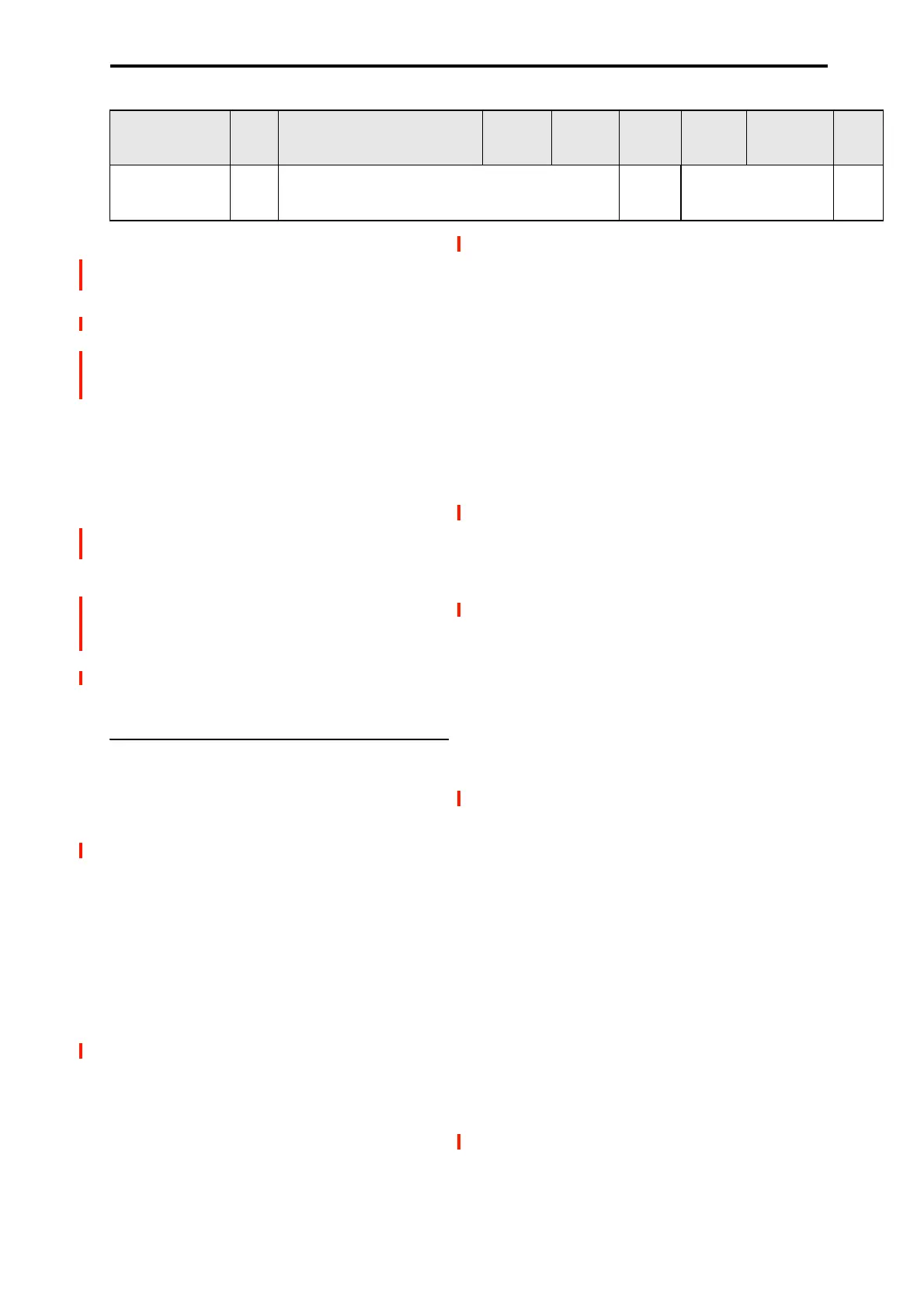Alternate Modulation Sources (AMS) Alternate Modulation settings
907
Notes for the table:
*1 EXT(+–): JS X, CC#16, CC#17, CC#19, Knob
Mod.5 (CC#20), Knob Mod 6 (CC#21)
*2 When Tempo is selected as an AMS source, the base
value is =120.00.
For example if the Pitch AMS is set to Tempo, and Intensity
is set to +12.00, doubling the tempo value ( =120.00 →
240.00) will raise the pitch one octave, and halving the
tempo ( =120.00 → 60.00) will lower the pitch one octave.
The stated modulation results are for tempo values between
60bpm and 240bpm. As the tempo decreases from 60 to
0bpm, AMS modulation will have increasingly negative
effects; as it increases from 240 to 250bpm, modulation will
have increasingly positive effects.
*3 EXT(+): Velocity, Exponential Velocity, Poly After
Touch, After Touch, JS+Y (CC#01), JS–Y (CC#02), JS+Y
& AT/2, JS–Y & AT/2, Foot Pedal (CC#04), CC#18[+],
CC#17[+], CC#19[+], Knob Mod 5 [+], Knob mod.6 [+],
Damper (CC#64), Porta.SW (CC#65), Sostenuto (CC#66),
Soft (CC#67), SW1 Mod. (CC#80), SW2 Mod. (CC#81),
Controller (CC#83), X-Y +X Mod. (CC#85), X-Y –X Mod.
(CC#86), X-Y +Y Mod. (CC#87), X-Y –Y Mod. (CC#88).
*4 It is possible to control LFO “Frequency” by using
Tempo AMS and “Intensity.” However if you use the
Frequency MIDI/Tempo Sync function (PROGRAM 5–1c),
the LFO frequency can be synchronized to the tempo and
note value.
The effects of AMS on various
parameters, and example applications
Using as HD-1 program as an example, we’ll describe some
examples of using alternate modulation.
Pitch (PROGRAM 2–2a)
Pitch can be controlled by the wave sequence’s AMS Out,
Common LFO, filter/amp EG, controllers, or tempo etc.
• If you select Filter EG or Amp EG as the AMS and set
“Intensity” to +12.00, the pitch will change up to ±1
octave in synchronization with the EG.
• If you select Tempo as the AMS and set “Intensity” to
+12.00, doubling the tempo (based on
=120bpms) will
raise the pitch one octave, and halving the tempo will
lower the pitch one octave.
Pitch EG Intensity (PROGRAM 2–2b)
Pitch EG intensity can be controlled by the wave sequence’s
AMS Out, Common LFO, keyboard tracking, controllers, or
tempo.
• If you select JS +Y:CC#01 as the AMS and set
“Intensity” to +12.00, moving the joystick in the +Y
direction will gradually increase the effect of the Pitch
EG to a maximum of ±1 octave. If “Intensity” has a
negative value, the effect of the Pitch EG will be
inverted.
Pitch LFO 1/2 Intensity (PROGRAM 2–2c)
Pitch modulation intensity of the LFO1/2 can be controlled
by the wave sequence’s AMS Out, Common LFO, an EG,
keyboard tracking, controllers, or tempo etc.
• If you select EG as the AMS, the pitch change width of
LFO modulation etc. can be controlled in
synchronization with the level changes of the EG. With
positive (+) settings of “Intensity,” the vibrato effect will
gradually deepen as the EG level rises, or gradually
lessen as the EG level decreases. With negative (–)
settings of “Intensity,” the LFO phase will be inverted.
• If you select a controller such as SW1 or 2 as the AMS,
you can press the SW1 or SW2 switch when desired to
turn on the vibrato effect.
Filter (Cutoff) Frequency (PROGRAM 3–1b)
The cutoff frequency of filter A/B can be controlled by the
wave sequence’s AMS Out, pitch/amp EG, Common
keyboard tracking, controllers, or tempo. Set AMS and
“Intensity” for Filter A or B.
• If you select JS X as the AMS and set “Intensity” to a
positive (+) value, moving the joystick toward the right
will raise the cutoff frequency, and moving it toward the
left will lower the cutoff frequency. Negative (–) settings
will have the opposite effect.
• If you select the same controller as an AMS and set
separate intensities for Filter A (Low Pass Filter)
“Intensity” and Filter B (High Pass Filter) “Intensity,”
you can operate a single controller to simultaneously
control the cutoff frequencies of both filters.
Resonance (PROGRAM 3–1b)
You can use the wave sequence’s AMS Out, EG, LFO,
keyboard tracking, controllers, or tempo etc. to control the
resonance level.
• If you select Filter Key Track or Amp Key Track as the
AMS, you can use the filter or amp keyboard tracking
settings to control the resonance level. For example if the
amp keyboard tracking parameters “Ramp Bottom-Low”
and “Ramp High-Top” are set to positive (+) values,
Amp Key Track is selected as the AMS, and “Intensity”
it set to a positive (+) value, playing toward either end of
the keyboard will cause amp keyboard tracking to
increase the volume, and AMS to raise the resonance
level.
• You can select a controller as the AMS, and apply
resonance when desired by operating the controller.
• You can select Common LFO, LFO1 or 2 as the AMS,
and use the LFO to control the resonance level.
Output Level (PROGRAM 3–1b)
You can use the wave sequence’s AMS Out, EG, LFO,
keyboard tracking, controllers, or tempo etc. to control the
output level of Filter A/B.
• Set the Filter Routing to Parallel, and specify the desired
Type and other settings for Filter A and Filter B. Set the
Wave
Sequence
Position
+63 0…+63 –63…0…+63 – – – –
–63…0…+63 0…+63
Wave
Sequence
Step Duration
400% 1x…4x 1/100x…1x…4x – 1/100x…1x…4x 1x…4x

